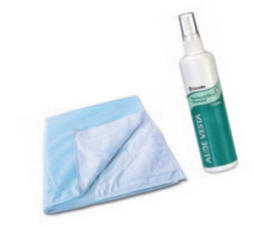|
The 1995 societal cost of incontinence for individuals 65 years of age and older was $26.3 billion, or $3565 per individual with urinary incontinence. Most of the total cost is associated with direct treatment, such as the cost of diagnostic testing and medication.[35] The cost of OAB was $12.6 billion in year 2000. Of that number, $9.1 and $3.5 billion, respectively, was incurred by community and institutional residents.[36] The cost of caring for UI and OAB in nursing facility patients is an estimated $5.3 billion annually.[35]
Fecal Incontinence There is also Fecal Incontinence, which is defined as the inability to control the passage of gas, liquid and/or solid stool. It has been estimated that more than 6.5 million Americans suffer from this condition.[38] One out of ten women in the general population has fecal incontinence, with one in fifteen of those women suffering from moderate to severe symptoms.[39]
It is suggested that 2.2 % of all women that have delivered one or more children experience fecal incontinence.[40] Seven percent of healthy people 65 years & older experience fecal incontinence, and 23% of stroke patients experience it.[39] 33% of elderly people at home or in a hospital experience bowel control problems.[2] Vaginal delivery with the assistance of forceps has been shown to be a cause of clinically significant pelvic floor dysfunction, which can lead to fecal incontinence.[41]
Pelvic Organ Prolapse Pelvic organ prolapse, or POP, may be considered a type of “hernia” in which the pelvic organs descend or shift within the pelvis, and in some cases, protrude outside the vagina. As many as 50% of women who have given birth one or more times have some degree of genital prolapse, but only 10 to 20% experience symptoms.[42]
Enlarged Prostate or Benign Prostatic Hyperplasia (BPH) Enlarged Prostate/Benign Prostatic Hyperplasia, or BPH, is characterized by urinary frequency, urgency, nocturia, weakened stream, and incomplete bladder emptying. As many as 50% of men experience symptoms of an enlarged prostate by age 60, and 90% of men will report symptoms by age 85.[46] In most men the prostate gland will undergo two stages of growth. The first stage occurs early in life and is usually complete by the end of puberty. The prostate usually remains this size for many years but may begin growing again, and cause problems by age 40.[47]
Bedwetting (or Nocturnal Enuresis) It is estimated that more than 5 million children in the US experience nocturnal enuresis (or bedwetting),[48] and it is estimated that 2-3% of men and women older than eighteen never achieve nighttime dryness.[49]
|



